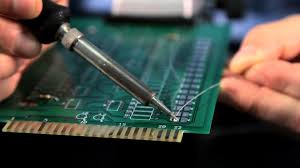
Breaking News
 Tuesday War Room LIVE: Trump Set to Shatter Deportation Record by End of First Year…
Tuesday War Room LIVE: Trump Set to Shatter Deportation Record by End of First Year…
 Parallel Polis Reborn: Freeing the Market through Decentralized Technologies
Parallel Polis Reborn: Freeing the Market through Decentralized Technologies
 Amazon goes nuclear with new modular reactor plant
Amazon goes nuclear with new modular reactor plant
 The alarming reality EXPOSED by the global internet meltdown... and why Amazon's crash...
The alarming reality EXPOSED by the global internet meltdown... and why Amazon's crash...
Top Tech News
 3D Printed Aluminum Alloy Sets Strength Record on Path to Lighter Aircraft Systems
3D Printed Aluminum Alloy Sets Strength Record on Path to Lighter Aircraft Systems
 Big Brother just got an upgrade.
Big Brother just got an upgrade.
SEMI-NEWS/SEMI-SATIRE: October 12, 2025 Edition
 Stem Cell Breakthrough for People with Parkinson's
Stem Cell Breakthrough for People with Parkinson's
 Linux Will Work For You. Time to Dump Windows 10. And Don't Bother with Windows 11
Linux Will Work For You. Time to Dump Windows 10. And Don't Bother with Windows 11
 XAI Using $18 Billion to Get 300,000 More Nvidia B200 Chips
XAI Using $18 Billion to Get 300,000 More Nvidia B200 Chips
 Immortal Monkeys? Not Quite, But Scientists Just Reversed Aging With 'Super' Stem Cells
Immortal Monkeys? Not Quite, But Scientists Just Reversed Aging With 'Super' Stem Cells
 ICE To Buy Tool That Tracks Locations Of Hundreds Of Millions Of Phones Every Day
ICE To Buy Tool That Tracks Locations Of Hundreds Of Millions Of Phones Every Day
 Yixiang 16kWh Battery For $1,920!? New Design!
Yixiang 16kWh Battery For $1,920!? New Design!
 Find a COMPATIBLE Linux Computer for $200+: Roadmap to Linux. Part 1
Find a COMPATIBLE Linux Computer for $200+: Roadmap to Linux. Part 1
The Art of Soldering

A version of this post originally appeared on Tedium, a twice-weekly newsletter that hunts for the end of the long tail.
A lot of people use electronics with little to no idea of what actually happens inside of the little box they have on their desk or in their pockets.
Sure, we might talk about the chips inside of that machine, or the processing power, but rarely do we think about the connective tissue holding many of the circuits onto the silicon.
That tissue is solder, the meltable filler metal that has existed in one form or another for more than 4,000 years—long before electronics even existed as a modern context.
But in an era where that fillable metal shows up in just about everything as a way to push power through our machines and bond circuits to silicon, even if it's not necessarily doing any of the processing of our computing, makes it important to discuss—especially as it's considered one of the artistic elements of electronics engineering.
Let's talk about the art of soldering. Yes, it's an art.
Why soldering proved an important limitation for the world of technology
The technical manual Quality Hand Soldering & Circuit Board Repair sounds like the kind of work that is designed to put you to sleep—especially if you don't know how to solder.
But if you turn it to the preface, you might be shocked to find one of the most enthralling stories this side of Chesley "Sully" Sullenberger. The 1983 crash landing of a Boeing 767 jet near Gimli, Manitoba, Canada, involved the pilot successfully "gliding" the plane to the ground because it had run out of fuel.
The crash happened for multiple strange reasons, including the fact that the country's aviation system had recently switched to the metric system and someone forgot to tell the person who put in the fuel.
But the reason why Quality Hand Soldering author H. (Ted) Smith (yes, the "Ted" is in parenthesis) cares? The fuel error wasn't caught right away, because the fuel gauge was on the fritz. Why was the fuel gauge on the fritz? Bad soldering, of course. It's a dramatic example in a book about a not-very-dramatic topic.
Suffice it to say, electronics folks take their soldering seriously. Another example: Whenever soon-to-retire YouTube electronics expert Ben Heck does a soldering video, the comments are inevitably full of people criticizing both his soldering technique and the fact that, like every other American electronics engineer, he says "saw-der," not "sol-der." (Heck can brush off the complaints because he built this.)



